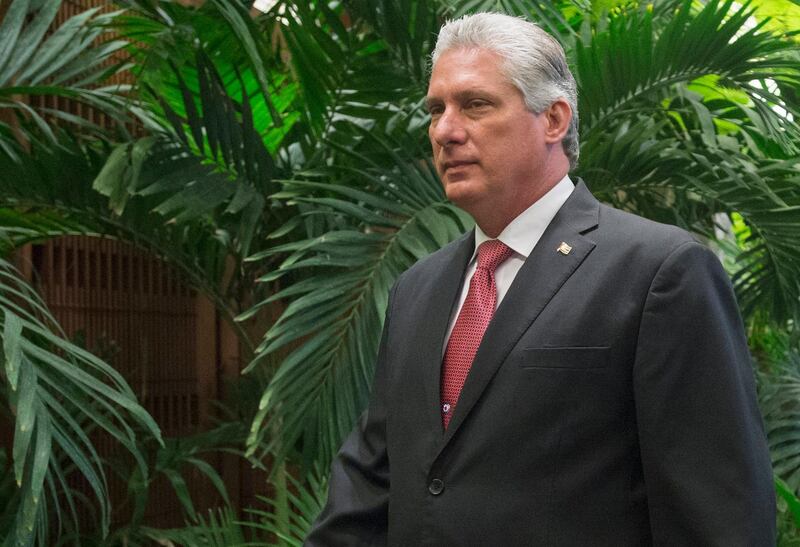Miguel Diaz-Canel, the next president of Cuba, earned his nickname as a young official making his way up through the Communist Party hierarchy.
The electrical engineer and party apparatchik would turn up unannounced to inspect the work of low-level state employees to ensure that they were not shirking or stealing much needed supplies.
With his 24-hour work ethic and attention to detail he became known as “Diaz y Noche”, a play on his name and the title of a popular crime series on TV that described his commitment to the party “day and night”.
He will need all of that energy if he is to make progress on Cuba’s economic shortcomings and command the sort of authority wielded by Fidel Castro and Raul Castro in leading Cuba through the decades since the 1959 revolution.
His elevation marks a key moment in the country’s history. Born in 1960, he marks a generational shift having known no other form of government than that overseen by the Castros. And despite being groomed for the top job for the past five years, little is known about his positions on key policy questions.
At times he has hinted at a more open and progressive direction and has called for increasingly critical coverage of the government in state-run media as well as better internet access.
But his image as a figure more in tune with the Cuban public jars with the fact that Mr Diaz-Canel was handpicked as a continuity leader who had proved his mettle by working his way steadily through the ranks and toeing the party line on the big issues facing the country.
His most recent speeches have included Castro-esque promises to fight imperialism in all its forms, for example.
______________
Read more:
[ Cuba brings forward assembly session to pick new president ]
[ Fidel Castro's eldest son commits suicide ]
______________
“There are reasons to expect he will be more flexible, more modern,” Arturo Lopez-Levy, a former Cuban government analyst who grew up in Diaz-Canel’s hometown and now lectures at the University of Texas, told Reuters.
“But there is no evidence in favour of him being a reformist and assuming he will abandon the one-party system or stop favouring the state sector over the non-state sector.”
The man who would become president grew up in a simple one-storey house in a rough neighbourhood of Santa Clara, the provincial capital of Villa Clara. The city was the site of the last battle of the Cuban Revolution and today is dominated by Fidel Castro’s mausoleum.
He is remembered as a bright pupil before studying to become an electrical engineer. His rise through the party began in his 20s when he was a lecturer at the university in Santa Clara and he became active in the Young Communist League.
At the time Villa Clara was considered one of the more liberal provinces in Cuba. It was the venue for rock concerts often banned elsewhere.
Mr Diaz-Canel took on increasing authority during the economic crisis of 1990s, triggered by the collapse of the Soviet Union and he was eventually named to the politburo – the party’s governing executive - in 2003.
Six years later he was made education minister and quickly became known for bringing a laptop to meetings, burnishing his credentials as tech-savvy leader from the first post-revolution generation. Today, local media like to point out the iPad he carries with him.
In 2013 he was appointed to the post of vice-president, making him the heir apparent to the Castro legacy and the man charged with continuing the course set by the brothers who led the country for almost 60 years.






